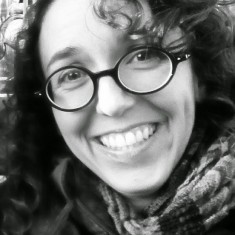Allison Molloy ’07

Class Year
2007
Area(s) of Study
Studio Art and Psychology
High School
Stevenson High School
Co-curricular
Phi Beta Kappa
Allison Molloy ’07 works as a fine arts educator at Vernon Hills High School, thanks to the training she received at Lake Forest College.
Why did you decide to major in art and art history?
I knew after taking seven art classes at Stevenson High School that I wanted to study art and art history. Lake Forest offered art studies as well as psychology, so I chose those majors with the intent of continuing with creative arts therapy in graduate school.
After taking an introductory education course at Lake Forest, I began to consider teaching art. In high school, I had several inspiring teachers who loved their careers and their students. This course paired with my passion for art creation and my love for observing how people learn in psychology classes spurred me to art education.
What was your most memorable course and why?
My most memorable course was my darkroom photography class. Arthur Lazar, a professional photographer and incredible teacher, was my professor. I recall extended discussions and critiques in his classes that inspired all of his students—especially the “decisive moment” lecture and street photography critique. His way with students, philosophy of teaching, learning, creating, and the insightfulness he encouraged really inspired me and I carry this into my own teaching.
I vividly recall the first time I loaded film in the darkroom lab space during his class. It took me two hours to overcome the claustrophobia of the small closet and successfully load my film in the reel for developing.
Was there a particular project or assignment that was especially rewarding or important for you?
During my senior seminar, the standout project was the non-western art object inspired piece. We had to research an art object created in a culture beyond European societies and then create an art piece inspired by our research.
I studied Japanese scroll paintings, focusing on the artists’ aesthetic, media, process, and purpose. The result of my focused research and creative planning culminated in two artist’s books that I devoted many hours of drawing, painting, mixed media, and natural object gathering to. My family, friends, colleagues and students continue to admire these books when on display.
How did your art and art history major prepare you for (graduate studies or) your career?
The creative problem solving and media use I learned through my studio art courses prepared me for my career in teaching high school art students. The capacity to experiment with materials, take risks, observe details in the world, and develop ideas within visual works of art play a part in my everyday teaching and creative experiences with my students.
I also create artwork on commission and sell my work professionally, so being able to create according to client requests and within a timeline was also an essential skill developed through my college art courses.
The art history courses at Lake Forest and in my post-graduate studies further enhanced my teaching. In planning most projects and Advanced Placement Studio Art breadth piece assignments, I turn to ancient, modern, contemporary, and non-western art history for inspiration. My passion for the history of art allows me to converse with other arts professionals using a shared vocabulary and knowledge foundation, and this love pushes me into museums, galleries, art festivals, and grass roots art events, which all increase my networking opportunities.
How would you describe your transition from Lake Forest College to post-graduate life?
Before graduating, I was already accepted into the Art Education K-12 Certification program at Elmhurst College. I studied more studio art, art history, and education classes over two years through EC, as well as completed a semester of student teaching during those two years.
In my many observation hours preceding student teaching and my actual student teaching experience at a middle school in Arlington Heights and Libertyville High School, I learned how to network and represent myself as the knowledgeable and skilled artist and teacher that I am. I earned long-term sub placements and subbed for a year in the district I now currently teach within. The transitions between all of these educational avenues were natural.
My recommendations from and connections with art, art history, and education professors at Lake Forest helped me along the way, especially in the early stages of my career.
What advice do you have for current or prospective students considering study in art and art history?
If you are considering studying studio art or art history, you need to have goals in mind. If those goals change during your experiences at the College, that is natural, expected, and okay! My majors stayed consistent, but my ultimate goals changed several times during my studies, as I exposed myself to more opportunities through my course work and discussions with professors and working professionals in the art and educational world.
Make as many connections as you can during college with people working in the art world and attend as many art-related events as time, travel, and expenses permit.
As an art or art history major, plan on completing some studies beyond your B.F.A. or B.A. at some point. I found that my degree was useful for entry-level positions, and with the new Art Education major, future teachers have even more immediate opportunities than I did.
More information to share?
Always keep creating! It makes you a more interesting, healthy, connected, and well-rounded person. You will develop a life-long passion that will ensure you are never bored and always mentally and physically active. Bring a camera-capable device with your everywhere you go. Even if you’re not a “photographer,” capturing visual memories that document your life experiences are so important.

